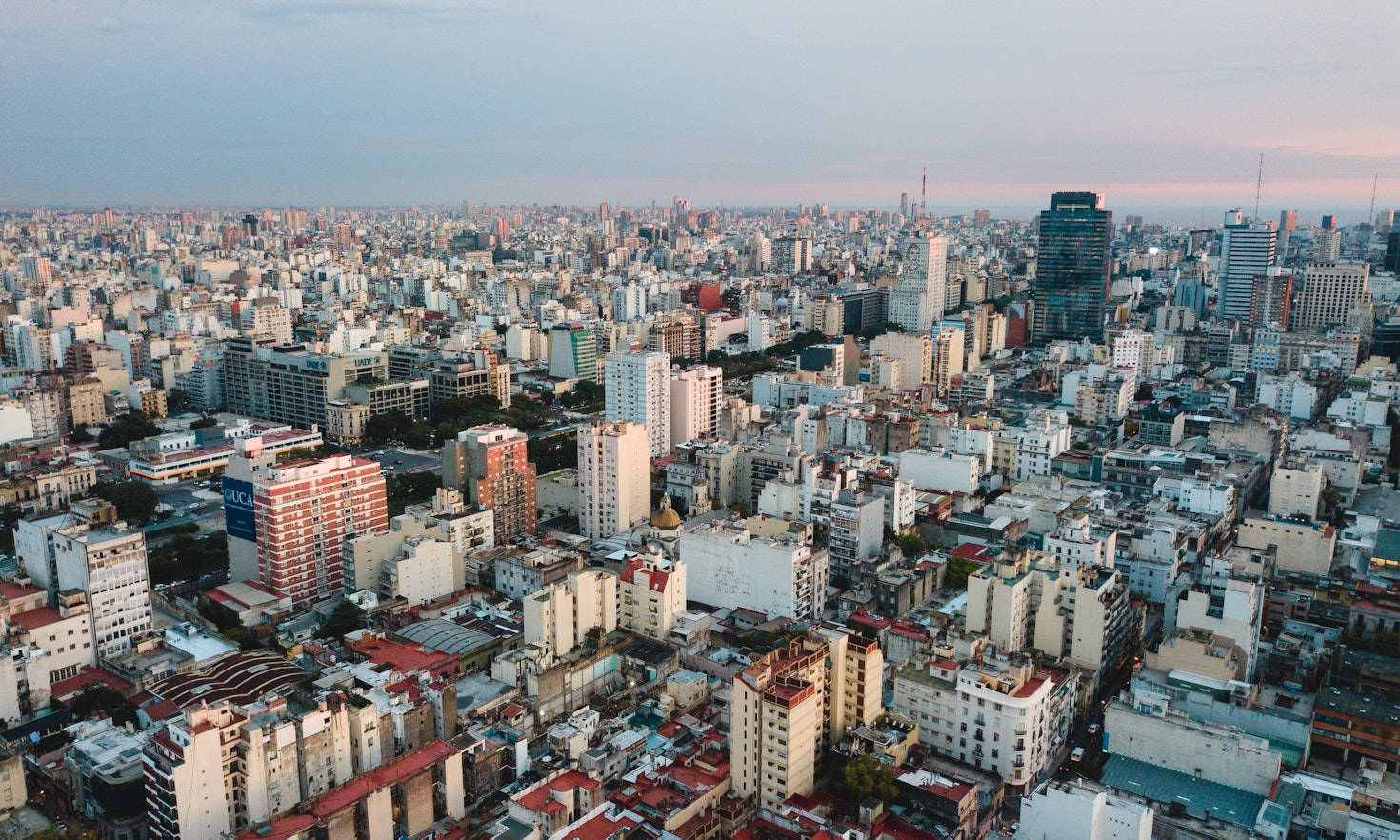Income inequality in the Argentine provinces

In Latin America, 55% of national income is captured by the top 10% of the population,1 making it one of the most unequal regions in the world.
Inequality is an issue with negative consequences not only for low-income sectors, but for the population as a whole.2 These consequences include an increase in violence rates,3 lower levels of economic growth,4 deterioration of the quality of democracy5 as well as overall health indicators.6
During the 2000s, Latin American countries experienced a sustained decline in inequality levels. However, this decline was not evenly distributed across countries, let alone across different regions within each country.7 Argentina, as a federal country, is relevant for the study of inequality because of its high degree of subnational decentralization – a system by which provincial governments possess resources through which they can decisively influence the implementation of national policies8 – and the presence of institutional and cultural factors common to all provinces that can be used as control variables in a comparative study. In addition, there is great variation in levels of subnational income inequality between and within provinces over time.9 Between 2000 and 2018, Argentina decreased its Gini coefficient from 0.4916 to 0.4685. However, during the same period, the Argentine province of Misiones reduced its Gini index almost 8 times more than the province of Córdoba; while in La Rioja the Gini index fell by 19%, in Catamarca the decline was 12.4%; Corrientes remained one of the most unequal provinces between 2003 and 2018, but Chaco went from being the sixth most unequal province to being among the 11 least unequal provinces towards the end of the series. To put it differently, while some provincial states (such as Tierra del Fuego or Río Negro) have a Gini index similar to Australia, others (La Pampa or Salta) resemble Liberia.10
What explains income inequality variations between subnational units of the same country? Answering this question requires us to delve into theories that incorporate subnational level factors which are omitted by theories developed to understand national level phenomena.11
The literature on subnational income inequality variations has primarily focused on demographic, structural, fiscal, public policy and political-institutional factors. There is some agreement that inequality decreases with population growth, urbanization levels, the share of people employed by the industrial and public sectors, electoral competition, the amount of federal transfers, social spending and voting turnout. On the other hand, inequality increases at higher levels of unemployment, poverty, agricultural employment, land tenure concentration, fiscal deficit and the early formation of subnational states.12 Moreover, political factors that have a “regressive” impact, (deepening inequality), have been studied mainly in literature on oligarchy, elites, alliances and state capture.13
However, as Del Tredici (2022) noted, social factors and civil society in general, have received particularly less academic attention by the literature on subnational income inequality variations. Following Evans and Heller (2015) we can define civil society as “the full range of voluntary associations and movements that operate outside the market, the state, and primary affiliations and that specifically orient themselves to shaping the public sphere”.14 Through her research on civil society and income inequality in the Argentine provinces, Del Tredici makes two fundamental contributions. Firstly, she shows that a stronger civil society can lead to more informed, progressive and efficient redistributive policies that are more likely to reduce income inequality, even at similar levels of public spending.15 Secondly, she sheds light on non-confrontational mechanisms through which civil society can have an influence on redistribution, something that so far, had not been considered by the literature that studies civil society’s effects through protests.16
It is clear that civil society matters. But what we still don’t know precisely is who and how. Civil society comprises a huge range of actors, including “(....) social movements, unions, advocacy groups, and autonomous non-governmental organizations (NGOs) and community-based organizations (CBOs)”.17 Do all of them have the same interests? Do they interact the same way with subnational states? Although a distinction has been made between “inward” and “outward” oriented civil society organizations18 - the latter associated with greater inequality reduction19 -, it is unclear how to classify them and the different ways in which they are organized or to do the like with their strategies for linking with subnational governments.
Furthermore, this literature often assumes that civil society is an external actor which affects redistribution outside of state institutions. However, can civil society’s actors also wield influence over public policy outcomes from within state institutions?.20 To presume a rigid divide between the state and civil society may overlook other mechanisms through which civil society can impact redistribution. The relations between the state and civil society are mutually constitutive21 and studies on the institutionalization of civil society have revealed that its organizations can actively engage in processes of interaction—against, through, and within the state—without necessarily losing their autonomy.22
Throughout my doctoral thesis my purpose is to make a contribution to the literature on determinants of inequality by focusing on one civil society actor with strong redistributive pressures that has not been studied so far: social movements. How social movements interact with the state can be relevant for studying subnational inequality in Latin American countries for two reasons. In this region, the increase in inequality in the 1990s and its subsequent decline coincides with the emergence of a plurality of social movements23 and the expansion of discretionary social policies that were channeled through social movement organizations.24 Moreover, during the 2000s, social movements were incorporated in the socio-political arena and even contributed to the Argentine governing coalitions and were granted official positions in the state structure.25
Three main aspects of social movement literature can be highlighted. Firstly, there are many approaches to the concept of social movements, but there is an agreement on their basic characteristics, defining them as “informal networks of conflict-oriented interactions composed of individuals, groups, and/or organizations that, based on shared solidarities, are provided with a collective political identity and use protest as a means–among others–to present themselves in the public arena”.26 Nonetheless, we still lack a conceptualization that can be used to clearly distinguish social movements from other actors and to observe them empirically in a comparative study. Secondly, social movements’ emergence has been far more developed than their outcomes and, particularly, their relation to income while inequality still remains unexplored. Finally, social movements are mainly studied at the national level, without focusing on their subnational level interactions.
Many contributions can be made to this field of studies. Understanding the intricate relationships between social movements and income inequality can lead to more effective policies aimed at reducing disparities and promoting greater social and economic equity within and between Argentine provinces as well as subnational units of other federal states.

Citation
This content is licensed under a Creative Commons Attribution 4.0 International license except for third-party materials or where otherwise noted.


This blog is part of the LoGov project. The project has received funding from the European Union's Horizon 2020 research and innovation programme under Grant Agreement No 823961.






